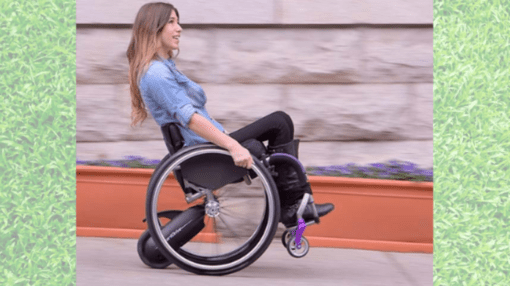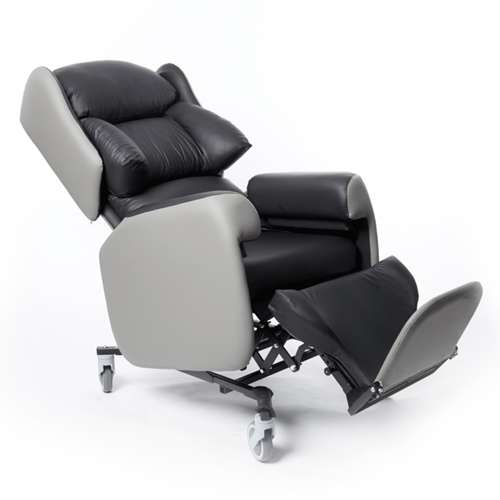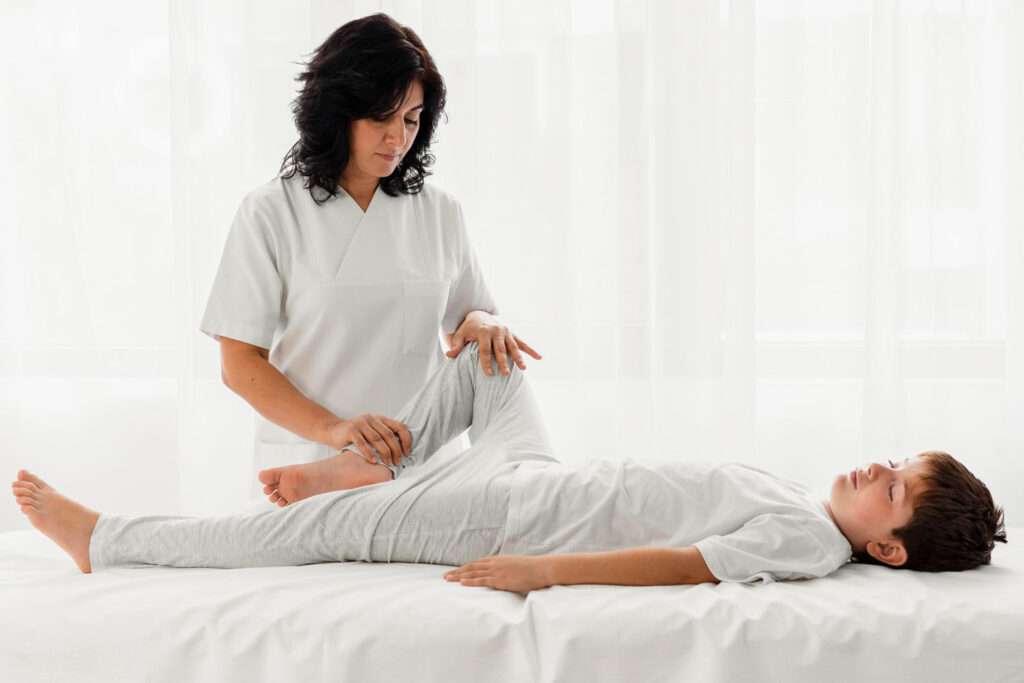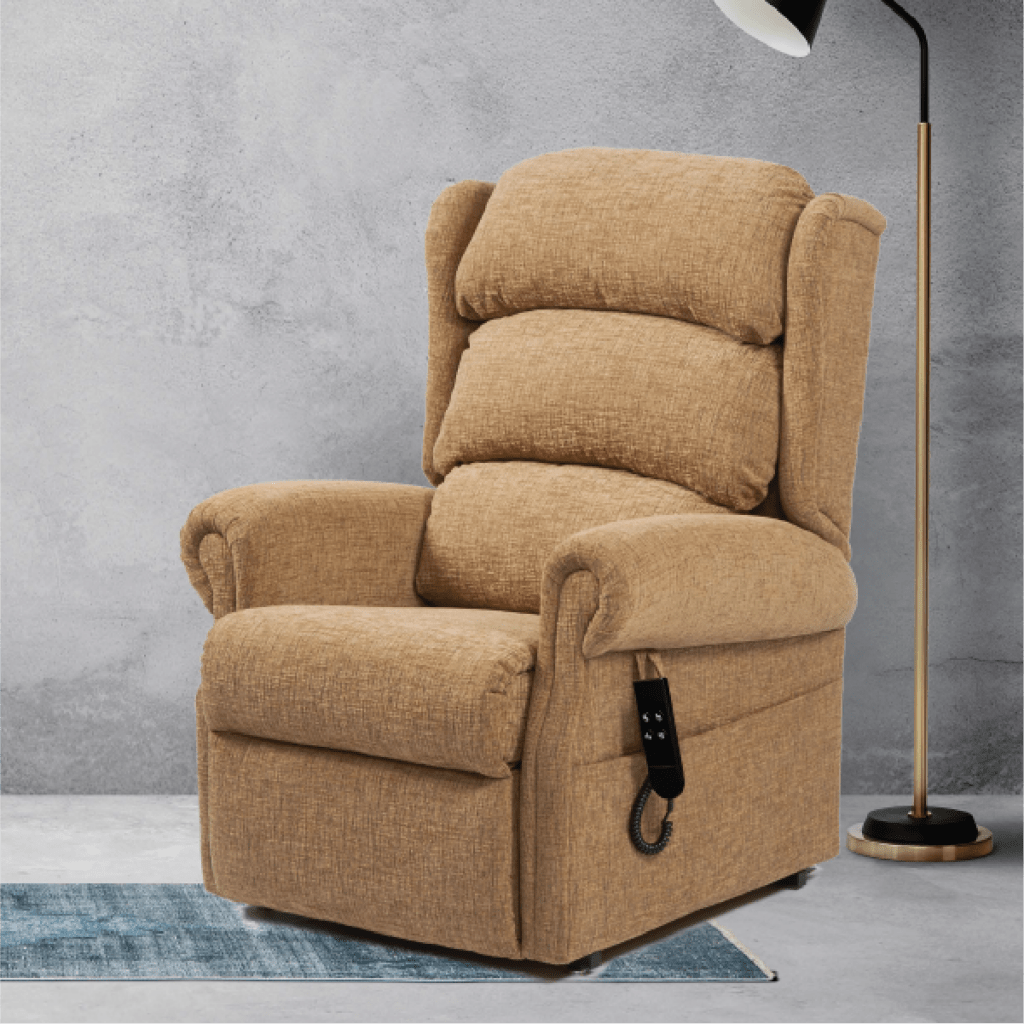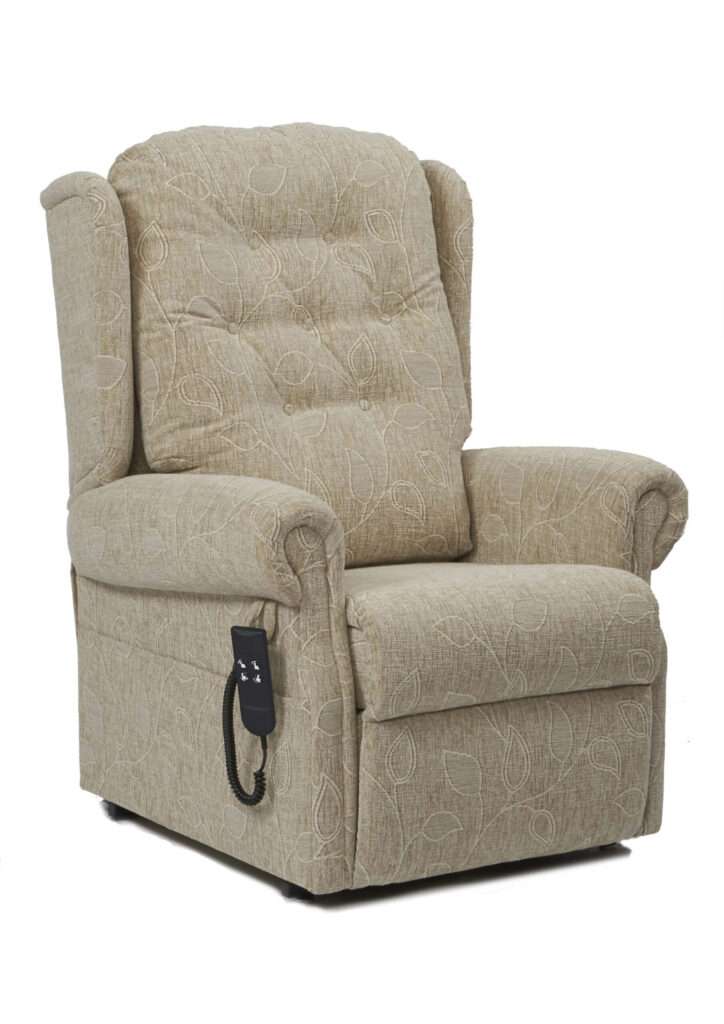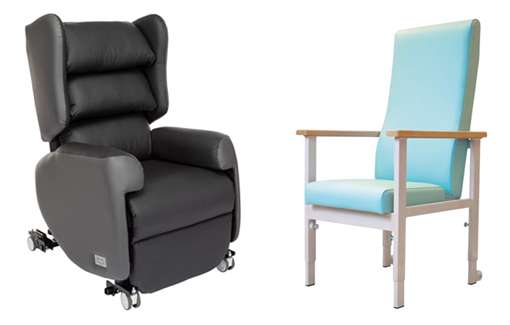For those who rely on a wheelchair for their everyday mobility needs, active user wheelchairs are an excellent choice. These highly manoeuvrable, lightweight wheelchairs are designed for individuals who are able to self-propel and require a high level of independence. However, even with the most advanced active user wheelchair, there may be times when additional assistance is needed.
That’s where powered add-ons come in. These devices can be attached to an active user wheelchair to provide extra power, speed, and range. From power-assist wheels to electric add-ons, there are a wide range of options available to suit every need and preference.
In this blog post, we’ll take a closer look at some of the most popular and innovative powered add-ons for active user wheelchairs. Whether you’re looking to increase your speed and range, tackle tough terrain, or simply make your everyday tasks a little easier, there’s a powered add-on out there that can help.
Let’s explore the world of powered add-ons for active user wheelchairs and discover how these cutting-edge devices can help you achieve greater independence and mobility.
A quick message:
Please note, we’re focusing powered add-ons for wheelchair users here. If you need an add-on to help an attendant to push a wheelchair, then you’ll want to look at powerpack options instead. Shop our range of power assist add-ons for manual wheelchairs and see the difference they could make to your mobility.
In this guide, we cover the three main types of powered add-on for active user wheelchairs. We will explore the benefits of powered add-ons, we’ll go through how they work and the pros and cons of each – all to help better understand the key differences and decide which option is best for you!
Jump straight to…
What is a powered add-on?
A powered add-on, also known as a power assist or motor attachment, is a device that can be added to a manual wheelchair to provide powered assistance. With a powered add-on, wheelchair users can overcome physical limitations, travel longer distances, and tackle hills and inclines with ease.
These devices can be attached to the front, rear or underneath of the wheelchair, and provide an electric boost to the wheels, making it easier for the user to move around. The add-on makes propelling easier and alleviates some of the physical strain.
With active user wheelchairs, this can further enhance the user’s independence. People find they can travel longer distances over more challenging terrain.
Having the option of electric power means they don’t have to worry about getting tired whilst out and about. They simply use the powered add-on and get on with their day!
There are three main types of powered add-on:
- E-Bike Attachments
- Power Wheels
- Rear Power Assist
Benefits of Powered Wheelchair add ons
Before we dive into the different types of powered add-ons available, let’s take a closer look at some of the benefits they offer. Firstly, they can help reduce the strain on your upper body, which is especially important for those with limited upper body strength or mobility issues. With powered add-ons, you can reduce the amount of energy required to self-propel and save your strength for other activities.
Secondly, powered add-ons can help you navigate different types of terrain with greater ease. From steep hills to bumpy surfaces, these devices can provide the extra power and stability needed to tackle tough environments. This makes them an ideal choice for those who enjoy outdoor activities or need to navigate challenging terrain on a regular basis.
Finally, powered add-ons can provide an added layer of safety and security. With features like anti-tip wheels and advanced braking systems, they can help prevent accidents and keep you safe while on the move.
Now, let’s take a look at some of the different types of powered add-ons available for active user wheelchairs.
Bike add-ons for active user wheelchairs
E-bike attachments, also called hand bikes or handcycles, are electric add-ons for wheelchairs.
Bike add-ons for active user wheelchairs are an innovative and exciting way to increase mobility and independence. These add-ons are designed to attach to the front of your wheelchair and transform it into a three-wheeled bike, allowing you to cover greater distances with less effort and greater stability.
One of the key benefits of bike add-ons is the increased speed and range they provide. With a bike add-on, you can cover up to three times the distance you would on foot, making it easier to run errands, commute to work, or simply enjoy a leisurely ride.
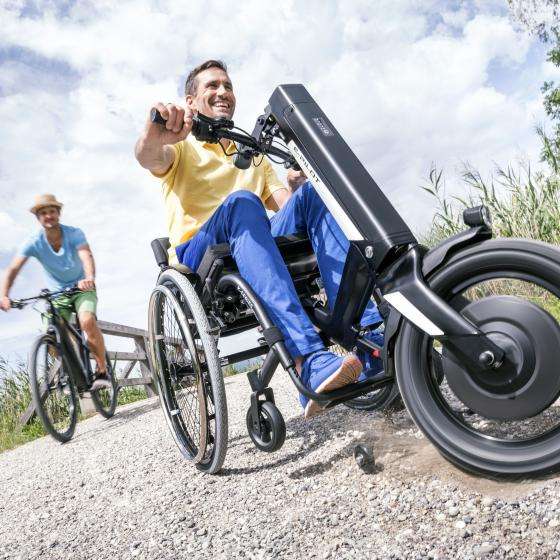
The E-Pilot is available in 11 different colours to match your wheelchair. Plus, it can connect to your smartphone for navigation and cruise control!
They clip onto the front of an active user wheelchair and turn it into a powered trike-style system.
Rather than propelling yourself and steering using your wheels, you use the handlebars. Just like riding a bike!
Hand bike add-ons are great for longer outdoor journeys. Lots of our clients use them for walking their dogs, going to the park with family, or joining their friends for a bike ride.
Another benefit for some people is the design itself. In outdoorsy settings, the bike add-ons don’t look like disability aids. This can give active wheelchair users more confidence when they are out exercising and socialising.
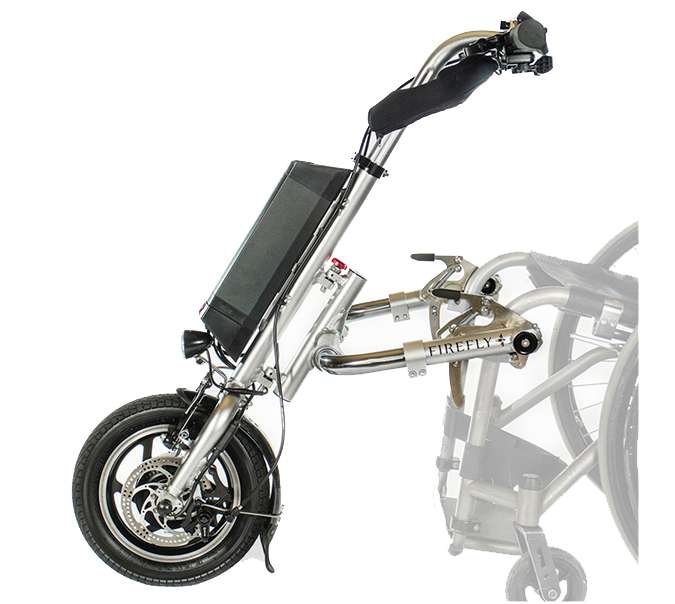
The Firefly handbike includes separate forward and reverse thumb throttles to make driving easier.
The batteries can have up to a 50km range and brakes are built-in for safety.
Despite these advantages, there are scenarios where an e-bike won’t be the best option.
As it attaches at the front, this type of add-on makes the wheelchair bulkier. It’s trickier to manoeuvre indoors e.g. when pulling up to tables and when getting on public transport.
Therefore, we typically don’t recommend handcycles for active wheelchair users who regularly travel by bus or train. Or for anyone who often needs to sit at a desk for school or work.
Pros and Cons of Hand Bikes
| Pros | Cons |
| Excellent for outdoor and off-road use | Not good for indoor use |
| High range — can travel long distances | Increases the size of the wheelchair |
| Suits users who struggle with the motion of self-propelling all the time | Not everyone likes using the handlebars for steering |
Power wheel add-ons for active user wheelchairs
Power wheels integrate electric motors into the wheel hubs. This gives you an extra boost over long distances or when going up steep hills.
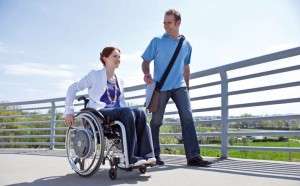
E-Motion power wheels have built-in rollback prevention for safety on slopes and hills.
A great thing about power wheels is your wheelchair doesn’t look any different. It stays compact, so manoeuvring (indoors and out) is as easy as ever!
Lots of our active user wheelchair clients like the fact they can still self-propel – as they would without any add-ons. For someone who is very independent, having that control can be important. You still need to push yourself forward so the electric motors kick in.
As a bonus, this can help with physiotherapy and rehabilitation. If someone still has use of their arms but needs to regain strength, then power wheels are ideal. You’re still performing the self-propelling action, but the motors provide support when you need it.
You will expend less energy and feel less tired after travelling.
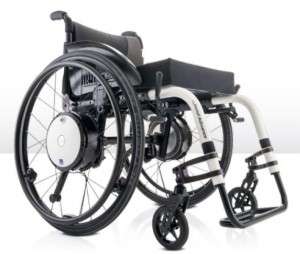
The Alber Twion Power Wheels recharge when you brake! That means you can travel further without worrying about your batteries
Some power wheels can accelerate up to 6.2mph! If you don’t want to use the power-assist full-time, simply take them off.
To benefit from most power wheels, you need good upper body strength.
Unfortunately, this type of add-on isn’t well-suited to people with paralysis or weakness down one-side. For example, after a stroke. You must be able to use both wheels for steering.
However, there is an exception to that rule…
Power wheels with joystick control
The E-Fix uses electric motors in the wheel hubs. But, unlike standard power wheels, it also comes with a joystick control unit.
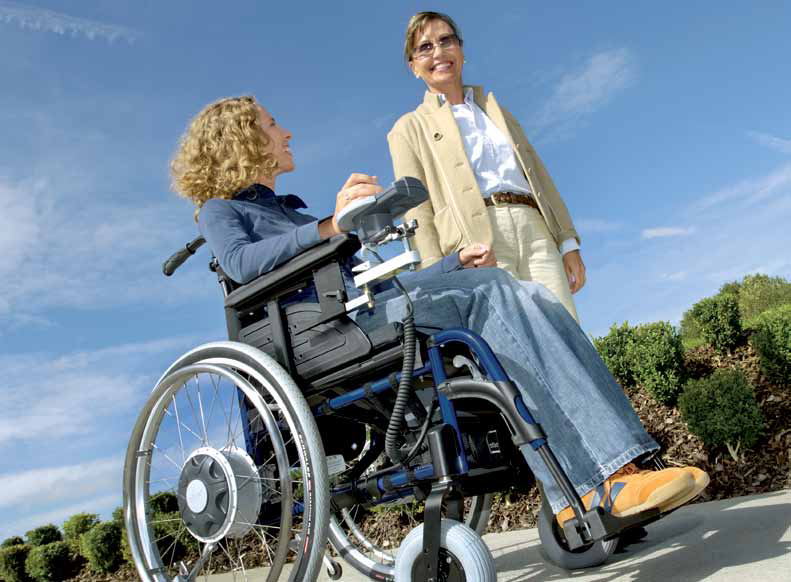
The joystick for E-Fix Power Wheels can be positioned for left or right-handed drivers
This means active wheelchair users who only have use of one arm can get all the benefits of power wheel add-ons!
We often recommend the E-Fix to clients who have had a stroke and been left with weakness or paralysis on one side of their body.
Pros and Cons of Power Wheels
| Pros | Cons |
| Doesn’t affect the wheelchair’s size or manoeuvrability | Users must be able to self-propel full time — unless you choose joystick controls |
| Can aid rehabilitation and physiotherapy | |
| Can be easily detached and reattached — with assistance |
Rear power assist add-ons for active user wheelchairs
Finally, you can get power assist add-ons which clip onto the back of an active user wheelchair.
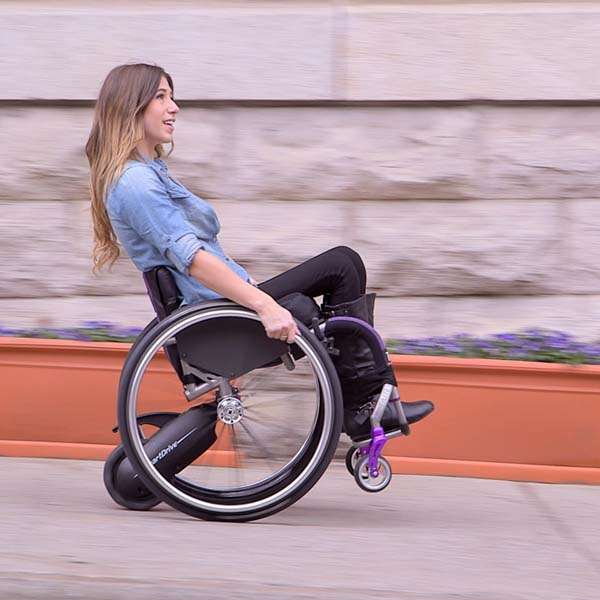
The Smart Drive powered add-ons is available with a quick-release mounting bar to make it easier to remove as and when needed.
They are essentially a powerpack made up of a battery, motor, brake, and wheel.
Unlike the bike attachments, these rear powered add-ons are very compact and don’t change the overall size of the wheelchair. That means they don’t affect your manoeuvrability indoors or outdoors!
As all the power comes from the back of the wheelchair, these add-ons are great from climbing obstacles. They give enough force to climb kerbs and get up steep slopes.
This is ideal for urban areas. Lots of our clients who live and work in towns/cities opt for a rear power assist add-on. They allow them to go from home to the shop, to the office, then out for the evening without fatigue or hand cramps.
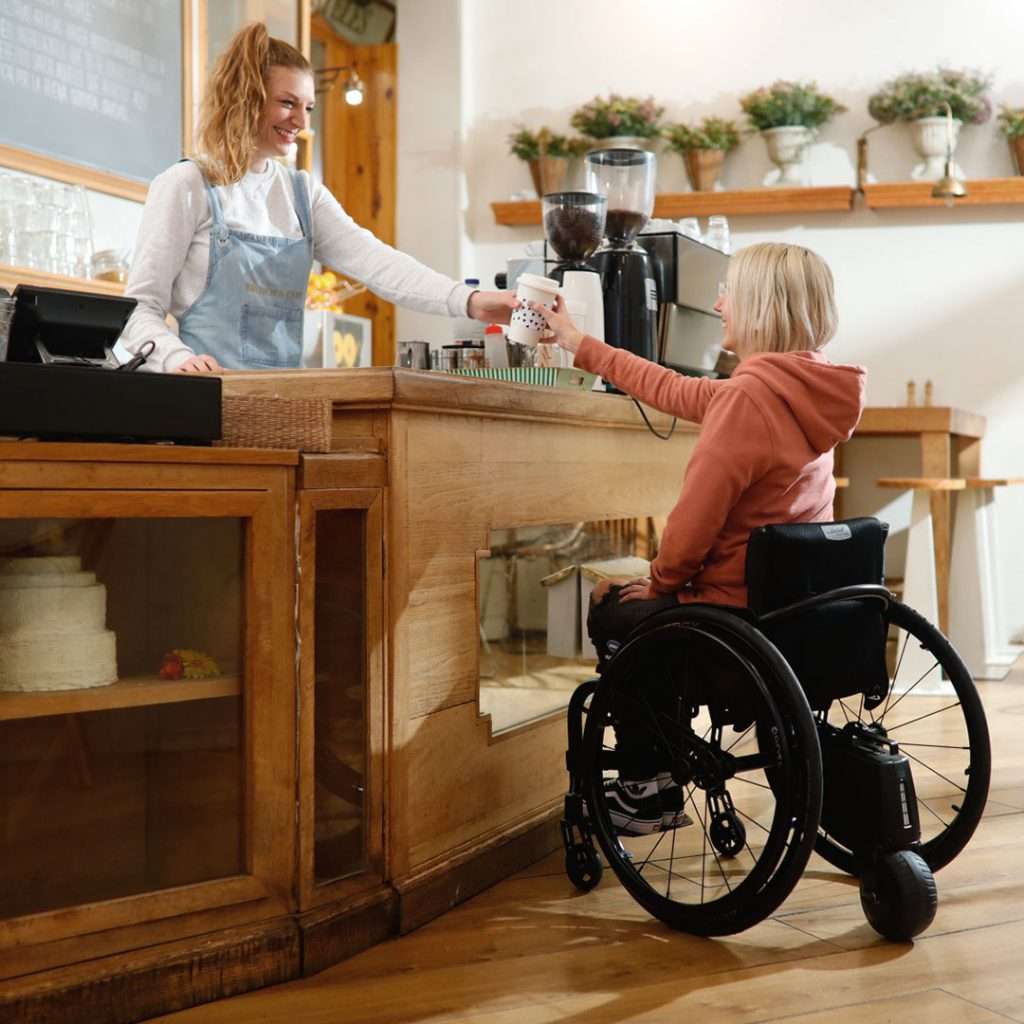
The SMOOV One has a flexible 360° drive wheel for effortless manoeuvring over most surfaces!
These add-ons are new and innovative. You can control them using Bluetooth, or even a smartwatch. It’s much easier than having to reach down and press buttons. Plus, modern controls make them very popular with younger users who are comfortable using technology.
One thing to bear in mind is how you’re going to attach and detach the rear add-on. The fixings are easy to use. However, if you can’t reach down to the back of your wheelchair, you will need someone to help you.
Pros and Cons of Rear Power Assist Add-Ons
| Pros | Cons |
| Doesn’t affect the wheelchair’s size or manoeuvrability | Not everyone will be able to detach and reattach the add-on independently |
| Bluetooth or smartwatch controls | |
| Great for obstacle climbing |
What’s the best powered wheelchair add-on?
When it comes to choosing a powered add-on for your active user wheelchair, there’s no single ‘best’ option. It depends on what activities you like to do and how much support you feel you need.
If you’re planning lots of outdoor adventures in nature, then a hand bike might be best. However, if you spend a lot of time in the city for education, work, and socialising then power wheels or a rear power assist add-on are probably more suitable.
For more free advice, come and see us for an assessment! Our specialist, David, has helped many active wheelchair users find the right add-on for their lifestyle. He will be more than happy to help.
Speak to our team today





